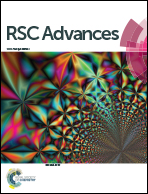Predictive calculation of carbon dioxide solubility in polymers
Abstract
The solubility of carbon dioxide in polymers has attracted great attention from scientists because it is an important application of green chemistry, and it is widely applied in extraction, separation and the preparation of new materials. In this work, a new solubility prediction model with both good accuracy and efficiency, called CEAPSO KHM RBF ANN, is developed. In the CEAPSO KHM RBF ANN model, an accelerated particle swarm optimization (APSO) algorithm with chaotic disturbance is employed to trim the radial basis function artificial neural network (RBF ANN) connection weights and biases in order to reduce the premature convergence problem, and the K-harmonic means (KHM) clustering method is used to tune the hidden centers and spreads of the radial basis function. The proposed model is employed to investigate the solubility of CO2 in polymers including polypropylene, polystyrene, poly(vinyl acetate), carboxylated polyesters and poly(butylene succinate-co-adipate). The results indicate that the proposed model is an effective method for solubility prediction with better performance and higher efficiency compared with the other methods, and should contribute to the understanding of the phase behaviour of the gas/polymer system and for the design and optimization of processing techniques.


 Please wait while we load your content...
Please wait while we load your content...